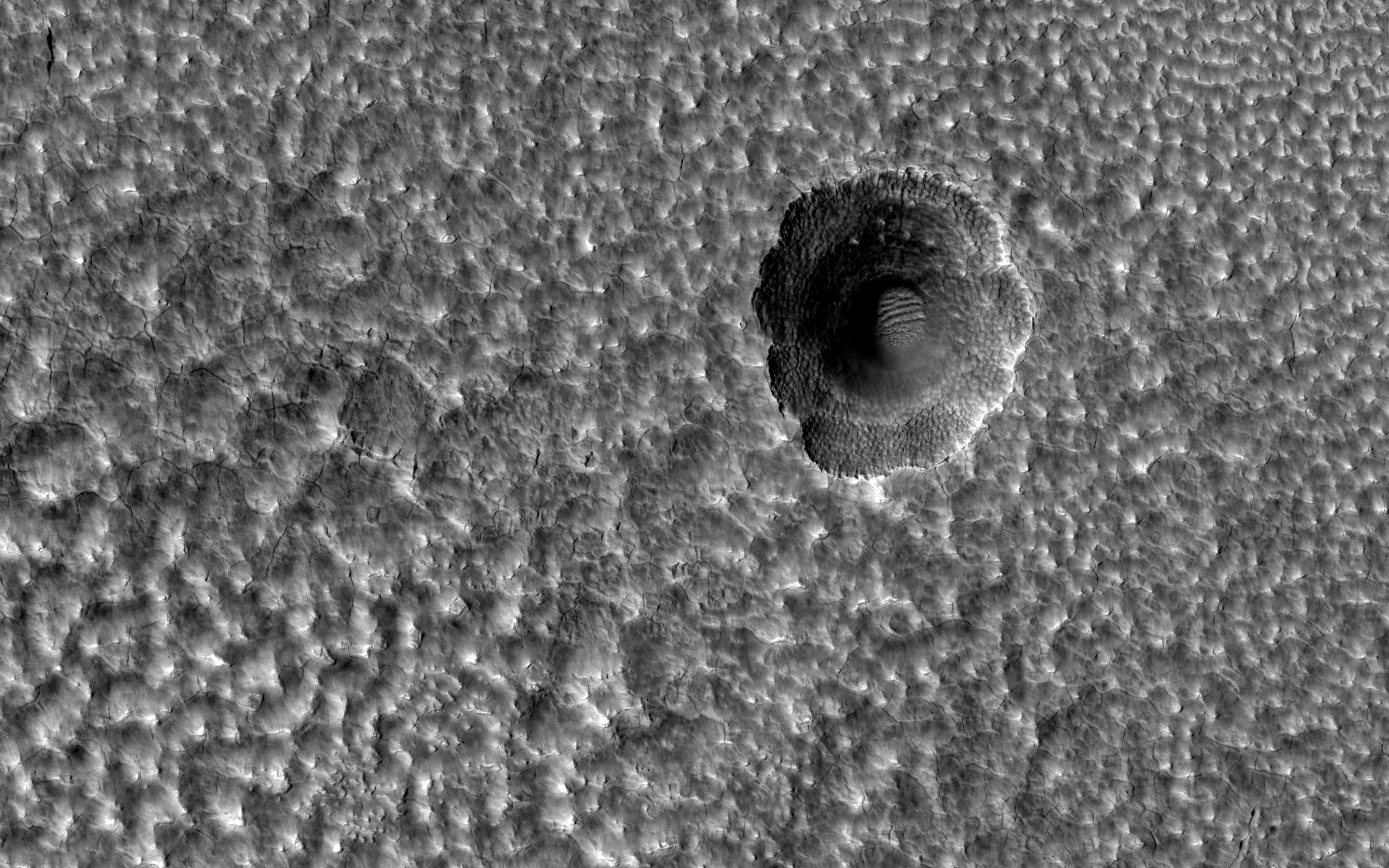
|
A Crater Enlarged by the Sublimation of Ice
- Click the image above for a larger view
- Full-Res JPEG (2880 x 1800) (775.4 kB)
- Full-Res TIFF (2880 x 1800) (5.2 MB)
Caption:

Map Projected Browse Image
Click on image for larger version
This image covers part of the ejecta from an impact crater (about 6-kilometers in diameter) to the west in Utopia Planitia. The ejecta lobes have morphologies suggesting icy flow.
Several small (about 100 to 200 meters in diameter) craters on top of those lobes have a distinctive formation . One interpretation is that the impact crater exposed nearly pure water ice, which then sublimated away where exposed by the slopes of the crater, expanding the crater's diameter and producing a scalloped appearance. The small polygons are another indicator of shallow ice.
The map is projected here at a scale of 50 centimeters (19.7 inches) per pixel. (The original image scale is 61.0 centimeters [24.0 inches] per pixel [with 2 x 2 binning]; objects on the order of 183 centimeters [72.0 inches] across are resolved.) North is up.
Background Info:
The University of Arizona, in Tucson, operates HiRISE, which was built by Ball Aerospace & Technologies Corp., in Boulder, Colorado. NASA's Jet Propulsion Laboratory, a division of Caltech in Pasadena, California, manages the Mars Reconnaissance Orbiter Project for NASA's Science Mission Directorate, Washington.
Cataloging Keywords:
| Name | Value | Additional Values |
|---|---|---|
| Target | Mars | |
| System | ||
| Target Type | Planet | |
| Mission | Mars Reconnaissance Orbiter (MRO) | |
| Instrument Host | Mars Reconnaissance Orbiter | |
| Host Type | Orbiter | |
| Instrument | High Resolution Imaging Science Experiment (HiRISE) | |
| Detector | ||
| Extra Keywords | Color, Crater, Impact, Map, Water | |
| Acquisition Date | ||
| Release Date | 2020-03-20 | |
| Date in Caption | ||
| Image Credit | NASA/JPL-Caltech/University of Arizona | |
| Source | photojournal.jpl.nasa.gov/catalog/PIA23759 | |
| Identifier | PIA23759 | |
